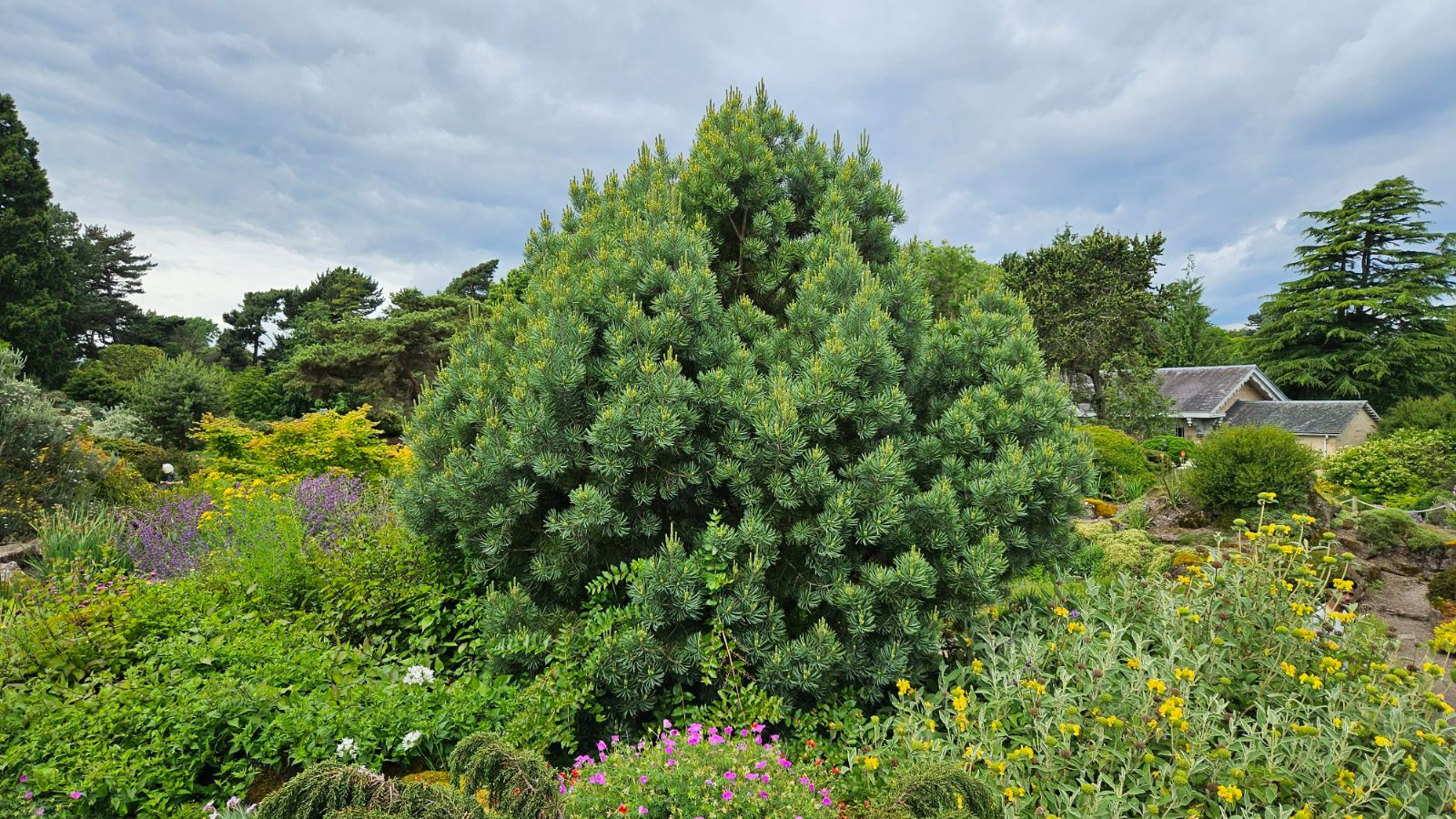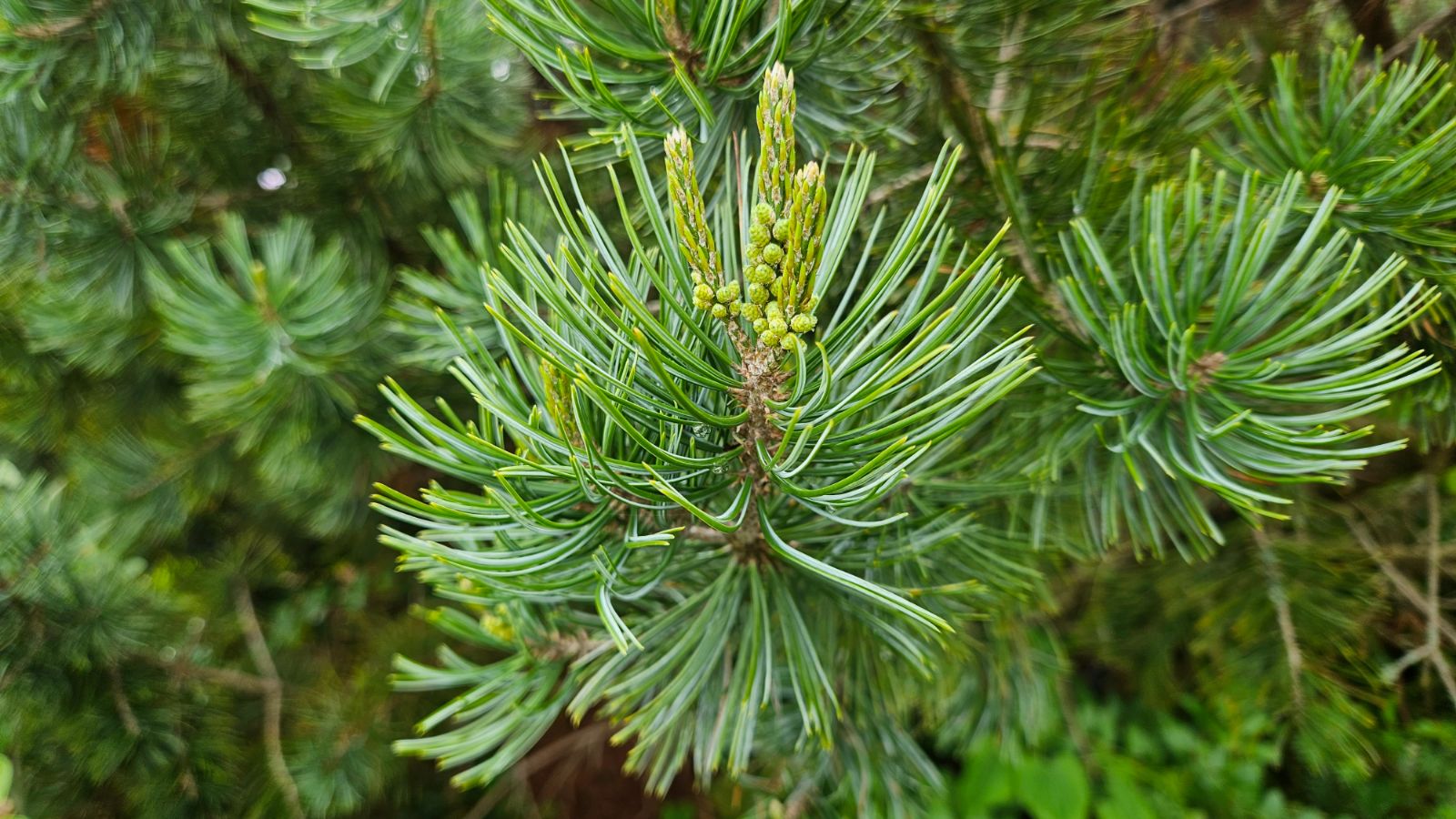Pinus johannis
Credits
Article from New Trees by John Grimshaw & Ross Bayton
Recommended citation
'Pinus johannis' from the website Trees and Shrubs Online (treesandshrubsonline.
Genus
- Pinus
- Subgen. Strobus, Sect. Parrya
Common Names
- Border Pinyon
- Dwarf Pinyon
Synonyms
- P. discolor D.K. Bailey & Hawksw.
- P. cembroides var. bicolor Little
Other taxa in genus
- Pinus albicaulis
- Pinus arizonica
- Pinus armandii
- Pinus attenuata
- Pinus ayacahuite
- Pinus balfouriana
- Pinus banksiana
- Pinus bhutanica
- Pinus brutia
- Pinus bungeana
- Pinus canariensis
- Pinus cembra
- Pinus cembroides
- Pinus chiapensis
- Pinus contorta
- Pinus coulteri
- Pinus culminicola
- Pinus densata
- Pinus densiflora
- Pinus devoniana
- Pinus durangensis
- Pinus echinata
- Pinus edulis
- Pinus elliottii
- Pinus engelmannii
- Pinus eremitana
- Pinus flexilis
- Pinus gerardiana
- Pinus greggii
- Pinus × hakkodensis
- Pinus halepensis
- Pinus hartwegii
- Pinus heldreichii
- Pinus henryi
- Pinus × holfordiana
- Pinus hwangshanensis
- Pinus jeffreyi
- Pinus koraiensis
- Pinus lambertiana
- Pinus leiophylla
- Pinus longaeva
- Pinus massoniana
- Pinus maximartinezii
- Pinus monophylla
- Pinus montezumae
- Pinus monticola
- Pinus morrisonicola
- Pinus mugo
- Pinus muricata
- Pinus nelsonii
- Pinus nigra
- Pinus oocarpa
- Pinus orizabensis
- Pinus palustris
- Pinus parviflora
- Pinus patula
- Pinus peuce
- Pinus pinaster
- Pinus pinceana
- Pinus pinea
- Pinus ponderosa
- Pinus pseudostrobus
- Pinus pumila
- Pinus pungens
- Pinus quadrifolia
- Pinus radiata
- Pinus remota
- Pinus resinosa
- Pinus rigida
- Pinus roxburghii
- Pinus sabiniana
- Pinus serotina
- Pinus sibirica
- Pinus strobiformis
- Pinus strobus
- Pinus sylvestris
- Pinus tabuliformis
- Pinus taeda
- Pinus taiwanensis
- Pinus teocote
- Pinus thunbergii
- Pinus torreyana
- Pinus virginiana
- Pinus wallichiana
- Pinus wangii
- Pinus yunnanensis
Shrub or tree to 5–12 m, trunk short, leaning, often forked, 0.1–0.25 m dbh, though trunk form may reflect environmental factors. Bark thin, dark grey, scaly on the lower trunk. Crown dense and shrubby. Branchlets stout, rough; vegetative buds 1–2 cm, pale grey-brown, slightly resinous. Leaves in fascicles of three to four, persisting for three to four years, slightly curved, rigid, dark green on outer face, glaucous blue-white on inner faces, triangular in cross-section, 3–5 × 0.09–0.13 cm, apex acute. Fascicle sheaths to 0.6–0.8 cm long, light grey-brown. Cataphylls 0.5–0.7 cm long, grey. Male strobili yellow, ovoid to subglobose, 0.5–0.8 cm long, pollinating in summer. Female cones subterminal, solitary or in whorls of two to three; peduncles short, nearly sessile, with semi-persistent cataphylls. Cones (2–)2.5–4.5 × 3–5.5 cm, dark green, maturing dark brown, mature in about 15 months; mature cones globose or subglobose with a flat base, forming an irregular rosette when fully open. Scales 45–60 (of which 10–20 fertile), opening widely, weakly attached to cone rachis; apophysis raised, light brown to dark to reddish brown, coarsely wrinkled; umbo dorsal, 4 mm wide, flat to slightly raised, dark brown to grey with a minute, deciduous prickle. Fertile seeds dark grey-brown (infertile seeds pale buff), 0.9–1.3 × 0.8–0.9 cm; wings vestigial, remaining attached to the seed scale. In some populations plants are subdioecious (male and female cones largely restricted to separate trees) (Floyd 1982). Perry 1991. Distribution MEXICO: Chihuahua, Coahuila, Durango, Nuevo León, north and west San Luis Potosí, northeast Sonora, western Tamaulipas, Zacatecas; USA: southeast Arizona, southwest New Mexico. Habitat Similar to P. cembroides, though more often on exposed, arid slopes and ridges. USDA Hardiness Zone 7. Conservation status Not evaluated. Illustration Farjon & Styles 1997.
The status of Pinus johannis (syn. P. cembroides var. bicolor) is controversial – most workers recognising it as one or two full species (Perry 1991, Malusa 1992, Passini 1994, Price et al. 1998, Richardson 1998, Gernandt et al. 2003), while a few (Farjon & Styles 1997, Farjon 2005a) consider it to be only a variety of P. cembroides. This situation is exacerbated at times by difficulty in distinguishing between small herbarium specimens, of taxa that may be quite easily differentiated in the field. Some further distinctions exist between eastern and western populations of P. johannis, that have implications for horticulture. In the northeastern Mexican states of Coahuila, Nuevo León and Zacatecas, it forms only low shrubs (to 4–5 m tall), comprising P. johannis s.s. In southern Arizona and New Mexico, and in the northwestern Mexican states of Chihuahua, Durango and Sonora, however, are populations that form trees of 9–15 m, and these are treated separately by some authors, as P. discolor. In foliage and cone characters there is a great deal of overlap, and P. discolor has been placed in synonymy with P. johannis by Passini (1994). Neither P. discolor nor P. johannis is reported to hybridise with P. cembroides, with which both sometimes grow, intimately mixed (Gymnosperm Database 2007c). In foliage characters, ecology and genetics, P. johannis is more closely related to P. culminicola than to P. cembroides (Malusa 1992, Gernandt et al. 2003). Pinus johannis is in cultivation at Berkeley from seed collected in Zacatecas in 1981 by Frank Callahan, and c.1989 by L. Briones. With its low-growing, shrubby habit and attractive blue-green foliage it has great horticultural potential, especially for use in water-wise gardens. In the United Kingdom it is grown at Benmore, from collections made by Michael Frankis in Nuevo León in 1991 (M.P. Frankis 114, 179). Keith Rushforth (pers. comm. 2007) has raised Frankis 179 to 1.5 m, and there is a 1 m specimen at the Hillier Gardens, where there is also a 2.6 m plant from John Horsman dating to 1986 (2007 measurements, from Sir Harold Hillier Gardens database); otherwise, however, it is rare in cultivation.


